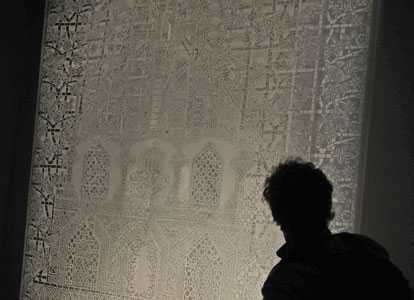Islamic calligraphy is one of the highest forms of art that man has ever known. It venerates both the beauty and the majesty of Allah, His Book, and His Messenger, honoring the most blessed words from the most blessed of all creation and carrying with them his nur.

Over the years, many other forms of Islamic art came to ornament these blessed words, and thus the art of calligraphy became more characterized by their beauty than their majesty.
However, not always. Walking towards the Old Mosque (Eski Camii) in Edirne, Turkey, you’ll find something quite striking from a distance—numerous calligraphy pieces painted directly on the wall, larger than life. They are simple. They are majestic. They are stunning to behold. This mosque, one of the oldest of Ottoman history, captures the spirit of the early Sufi-sultans who established this legendary empire.
It is in this spirit, we set out on a quest to capture the beauty of Islamic calligraphy combined with reviving the tradition of large majestic calligraphy directly on the wall and bring it into your home, as a reminder that helps us proceed forward, as a meaning of our ultimate purpose, as an expression of hearts longing for the Divine. Or in other words, increasing one’s Irada.
The word Irada means to strive for something one wants or desires. Or, in a spiritual context, meaning striving for the Divine. With Irada Arts on your wall, this is what we aim to increase. With constant gentle reminders that are beautiful to look at and have a large majestic presence that cannot be overlooked, Irada Arts directs you to strive for what you want. Your walls talk, conveying to you messages that speak to your heart.
The end result was Irada: Islamic Wall Arts.
Irada: Islamic Wall Arts are quotes from Quran, Hadith, Islamic Poetry, Wise Sayings of the Pious, and so on, designed in English or Arabic, or both, of various sizes that can be applied onto the wall, seeming to the viewer as if calligraphy is painted directly on the wall.
We think “outside the frame.” By removing the “frame” of traditional calligraphy and increasing the size of the calligraphy piece, the walls act as the frame. The effect is a beautiful piece of calligraphy whose majesty and presence is felt. The walls speak to you, addressing those who will listen, reminding those who forget, and helping us all proceed. With Irada, transform your home, office, or school into a profound place of inner worship.
via The Irada Story.

